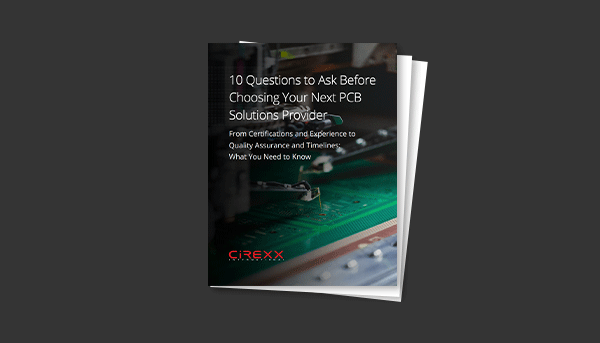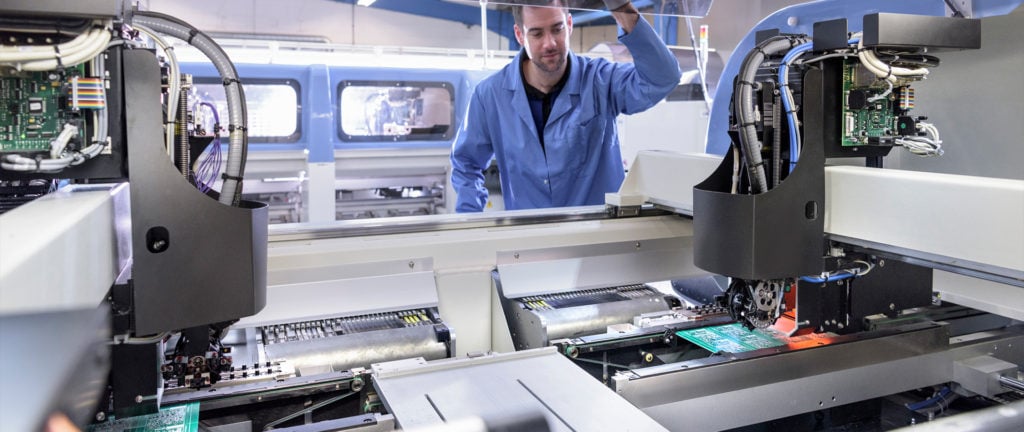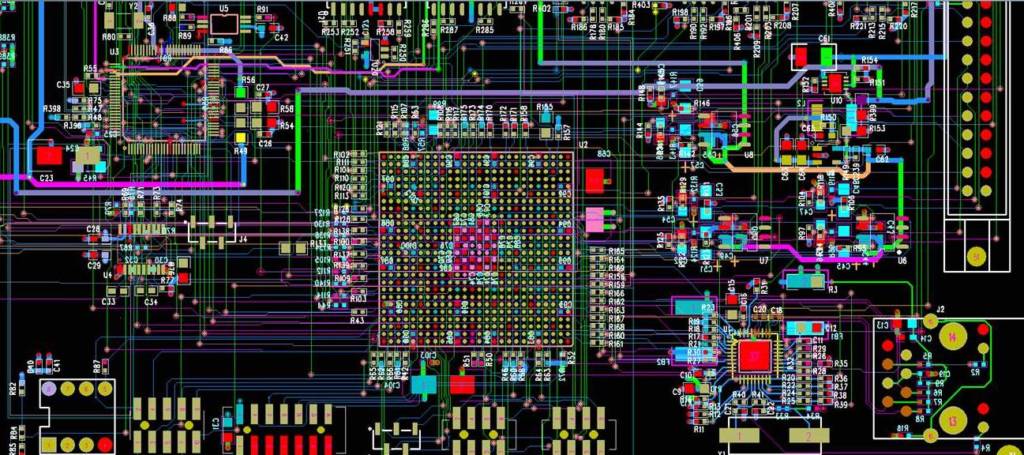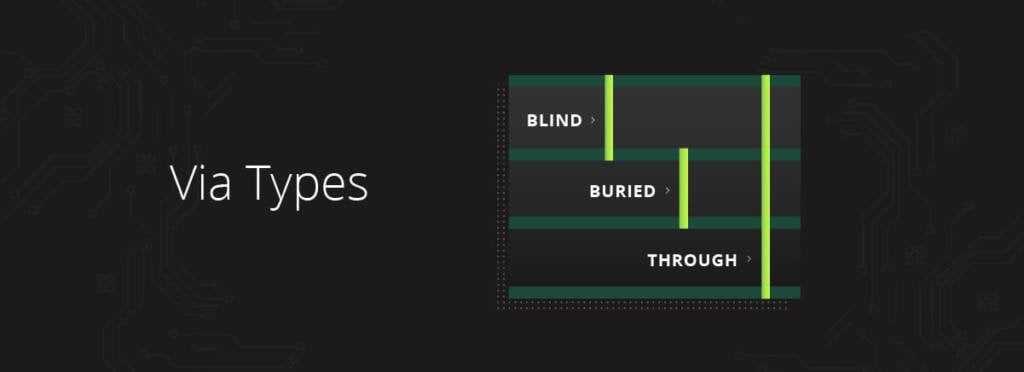Understanding PCB Costs & Pricing [Your Complete Guide]
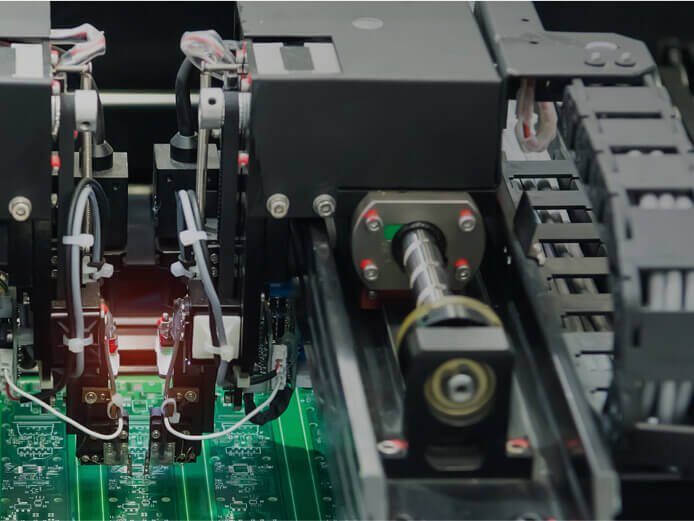
What affects the price of a printed circuit board? It’s a good question — and one that has many answers, some of which you may not have considered. From materials and board size to certifications and turnaround time, there’s a lot to factor in when talking PCB cost. Keep reading for all the details — including things you need to know before requesting a quote.
PCB Cost Drivers
PCB size
The size of the printed circuit product and whether it is flex or rigid can limit the number of circuit boards on a panel, which affects the unit cost. Movement of the various materials, and layer count of the project can also affect how many boards per panel and thus, the cost.
Order quantity
PCBs may cost less if ordered in larger quantities vs. prototypes. There’s a minimum cost to process a 1-2 panel order that is reflected in the unit cost. Once a prototype is made, it’s easy to duplicate and will drop in price as the quantities are increased.
Number of layers
The number of layers will greatly affect the price of your PCB project. Each one of the interlayer cores in a high-layer count PCB must undergo separate processing. The more layers you have, the more processing, which increases the cost of any project. Other cost drivers related to this include the overall thickness, whether or not there are any buried and blind vias, slots, backdrilling and any extra milling.
Turnaround time
Turnaround times are affected by the lead time of materials and complexity of the design. It’s important to request a turnaround time that is appropriate to the project. In other words, you would not expect to receive a complicated 20-layer board in just a few days.
Material selection/weight
For flex projects, adhesive-less materials are more expensive than adhesive-based materials. Mixed copper weights and copper weights below half ounce are more expensive since they are more difficult to manufacture. Certain thicknesses of materials — anything above 6 mil — have a longer lead-time, which can also increase the cost. For rigid boards, lead times and types of materials should be factored in at time of quote.
Overall complexity of the design
There’s a lot that goes into the layout, fabrication, and assembly of a printed circuit board. The following is a list of design features that all drive cost.
- Line width and spacing
- Heavier copper weights (may be hard to produce)
- Controlled impedance
- Multiple lamination and drill cycles
- Blind vias
- Stacked vias
- Number of via fill steps
Trace width and spacing
A trace is a wire that conducts signals, and one of the most important features of any PCB project is trace width, which refers to the measurement of the electrical values. The right trace width means you will not only have the correct amount of current, but that your PCB will not overheat. A higher current means a thicker trace, and thicker copper becomes more difficult to image and etch. The finer the trace and space also affects yield, which impacts cost.
Number of drill holes/size of drill holes
Micro vias can be costly since they are often made with lasers, which are more expensive. The number of holes will also impact the cost as more drill bits are needed. As the drill bits become smaller they are more prone to breaking, which can affect the overall materials cost.
Controlled impedance
Impedance refers to how much and how quickly signals can travel down a trace. The number of parts per panel can be greatly reduced due to the fact that the coupons need to be added for verification of the impedance. Impedance has to be tested and usually involves tolerances that may affect the acceptance of the impedance. Tighter trace width tolerances often go along with the impedance.
Surface finish type
Surface finish types will also affect the PCB cost. Leaded hot air solder leveling (HASL) and immersion gold (ENIG) are typically the lower cost alternatives; lead-free is more expensive. Other options include ENEPIG, immersion tin, immersion silver, and flash gold.
Soldermask/coverlay
The soldermask refers to a technique in which everything on a circuit board is coated with epoxy based soldermask except the contacts to be soldered, the gold-plated terminals of any card-edge connectors, and fiducial marks. The coverlay serves the same purpose — to insulate the flex PCB — but it has more flexibility and is more expensive than soldermask because it’s a film that must be drilled or routed and aligned to the etched panel. A coverlay must also undergo a lamination process.
Labor
A simple rule of thumb to remember: More processes equal more labor. There is a standard set of processes for every circuit board, but as PCBs become more complex, additional processes are required, which will increase the
Certifications needed
Certifications can affect PCB price if it’s a Class 2 or Class 3 product; in these cases, there needs to be an appropriate number of coupons that must be oriented to the panel in selective areas. This can also limit how many parts are placed on the panel.
Tighter tolerances are often required for many Class 3 projects, which can be more expensive. Also, some customers seek independent lab results for verification on specific product requirements; these costs must be factored into the overall project.
PCB providers that work on government-related projects must keep up to date on military certifications, and AS9100 which are expensive to maintain.
Things to Know Before Requesting a Quote
If you want to obtain an accurate quote the first time, it’s important to include as much information as possible in your request. This includes:
- Type of printed circuit board and/or technology (if known)
- What the board is being used for
- Lead time
- Number of parts you’re looking for
- Stackup details
- Impedance requirements
- Dielectric thicknesses
- Copper thicknesses
- Overall thickness of the part
- Gerber files (computerized data for layout)
- Assembly drawings
- BOM
- Fabrication drawing
- Any other relevant information
If you aren’t sure about a piece of information that’s being requested, seek clarification from the PCB provider that is asking for a quote.
Quick Online Quoting
Quick quoting can be helpful — but some providers have an automated tool that only asks for limited information, which will delay the process and typically lead to inaccurate quotes. The right PCB provider will be thorough and ask for detailed information in online quote forms.
Questions About Your Next PCB Project?
We hope you’ve found this information helpful. There’s a lot that goes into the fabrication of a printed circuit board, and we want our customers to be aware of all the potential cost drivers. If you have any questions or would like more information, please contact us. The team at Cirexx has decades of experience and would be more than happy to help with your next PCB project.

